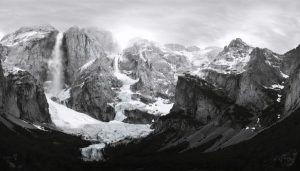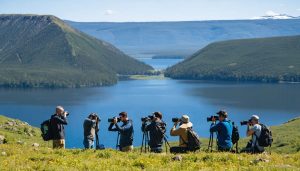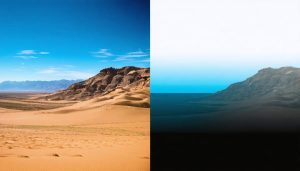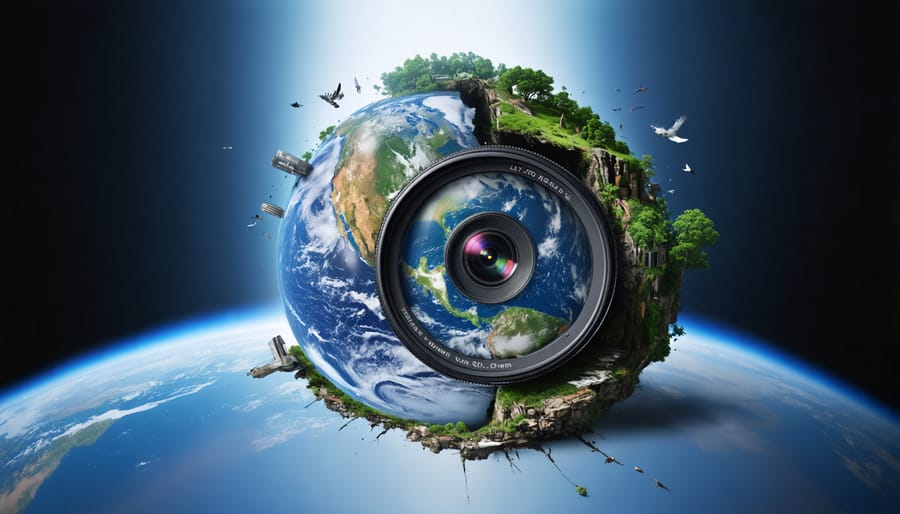
Harness the power of images to illuminate our planet’s plight. Environmental photojournalism marries the artistry of visual storytelling with an unflinching commitment to documenting humanity’s impact on the natural world. Wielding cameras as instruments of change, these intrepid photographers venture from melting Arctic glaciers to smog-choked cities, bearing witness to the dire consequences of unchecked consumption and thoughtless destruction. Their arresting images, at once harrowing and breathtakingly beautiful, serve as an urgent call to action – a vivid reminder that our choices today will shape the Earth inherited by generations to come. In an era of looming ecological catastrophe, environmental photojournalism has emerged as a vital force for awareness and activism, galvanizing global efforts to preserve the fragile web of life sustaining us all. Its power lies not in detached observation, but in its ability to stir hearts, change minds, and inspire the collective will needed to chart a sustainable future.
The Power of the Image
Emotional Impact
Environmental photojournalism has the power to evoke strong emotions and foster empathy for the planet and its inhabitants. Striking images of melting glaciers, polluted oceans, or displaced wildlife can stir a sense of urgency and concern in viewers. By capturing the stark reality of environmental issues, these photographs make the abstract concepts of climate change and ecological destruction tangible and relatable.
Effective environmental photographs often juxtapose the beauty and fragility of nature with the devastating impact of human activities. An image of a seal entangled in plastic waste, for instance, highlights the heartbreaking consequences of our disposable culture. Such visuals have the capacity to elicit feelings of sadness, anger, and a desire to take action.
Moreover, environmental photojournalism can inspire empathy by putting a face to the victims of ecological crises. Portraits of indigenous communities displaced by deforestation or farmers grappling with drought humanize these issues and create a personal connection between the subject and the viewer. This emotional bond is crucial in motivating people to care about and engage with environmental causes.
By stirring emotions and fostering empathy, environmental photojournalism has the unique ability to shift perspectives, change behaviors, and galvanize support for conservation efforts. The power of these images lies in their capacity to make us feel deeply and compel us to act.
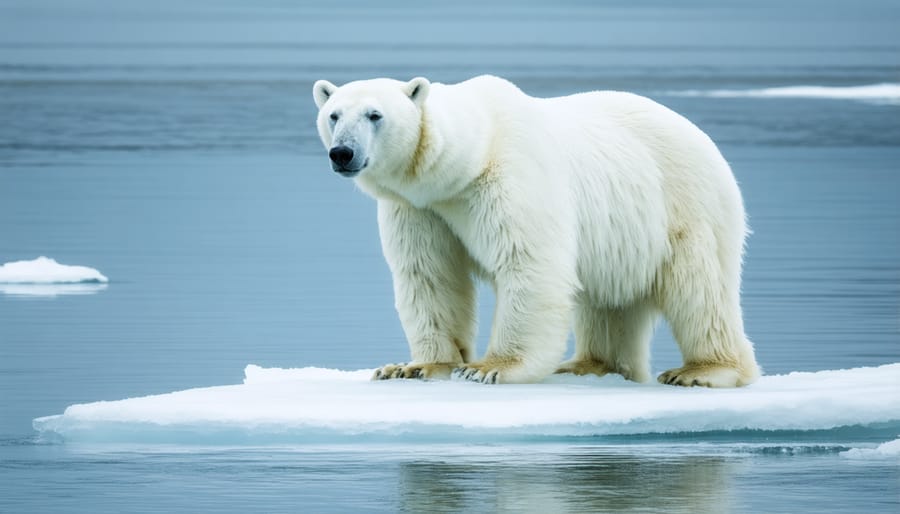
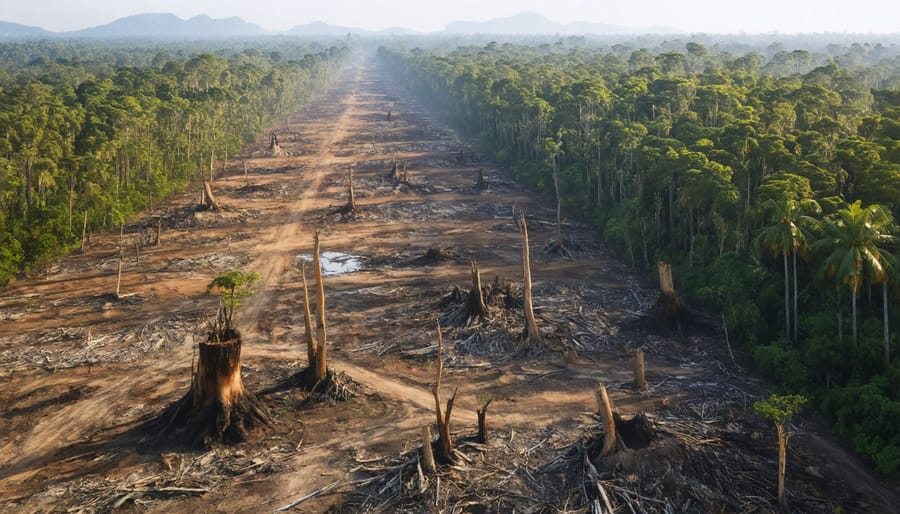
Documenting Reality
Environmental photojournalism plays a crucial role in documenting the realities of our planet’s environmental issues. Through powerful imagery, photojournalists capture the devastating effects of climate change, pollution, deforestation, and other ecological challenges. These photographs serve as irrefutable evidence, bringing the often-distant consequences of human actions into sharp focus.
By visually depicting the scale and severity of environmental problems, photojournalists raise awareness and evoke emotional responses from viewers. Their images have the power to inspire change, influence policy decisions, and galvanize communities into action. However, capturing these moments requires more than just technical skill; photojournalists must also navigate ethical considerations to ensure their work accurately represents the situation without exploiting vulnerable subjects or environments.
Environmental photojournalism has played a significant role in shaping public perception and understanding of pressing issues like melting glaciers, rising sea levels, and the impact of plastic waste on marine life. As the world grapples with the urgent need for sustainable solutions, the work of these dedicated photographers will continue to be a vital tool in educating and mobilizing people to protect our planet for future generations.
Techniques and Tips
Finding the Story
To find compelling environmental stories, start by identifying issues that resonate with you personally. What environmental challenges do you see in your own community? Look for untold stories that highlight the human impact of environmental problems. Research current events and scientific reports to uncover potential topics, from local pollution to global climate change.
Consider how you can visually convey these stories in a powerful way. What images would capture the essence of the issue and evoke an emotional response? Seek out unique angles and perspectives that go beyond the obvious.
Collaborate with environmental organizations, scientists, and affected communities to gain deeper insights and access. Building relationships is key to finding meaningful stories and creating impactful photojournalism.
Remember, compelling environmental stories combine strong visuals with human narratives. Look for ways to showcase both the beauty of our planet and the consequences of our actions upon it.
Composition and Lighting
Capturing impactful environmental photographs requires a keen eye for composition and an understanding of how to harness light effectively. Start by identifying a compelling subject that tells a story about the environment. Consider the rule of thirds when framing your shot, placing key elements along the gridlines or at their intersections to create a balanced, visually appealing image. Pay attention to leading lines, such as rivers or trails, which can draw the viewer’s eye into the scene. Experiment with different angles and perspectives to add depth and interest to your photographs.
Lighting plays a crucial role in setting the mood and emphasizing the subject. Aim to shoot during the golden hours—just after sunrise or before sunset—when the light is soft and warm, casting long shadows and bathing the landscape in a golden glow. Alternatively, embrace the drama of harsh midday light to highlight textures and create striking contrasts. Don’t forget to pack essential gear like a polarizing filter to reduce glare and enhance colors, or a graduated neutral density filter to balance exposure between the sky and foreground. By mastering composition and lighting techniques, you’ll be well-equipped to create powerful, thought-provoking images that shed light on critical environmental issues.
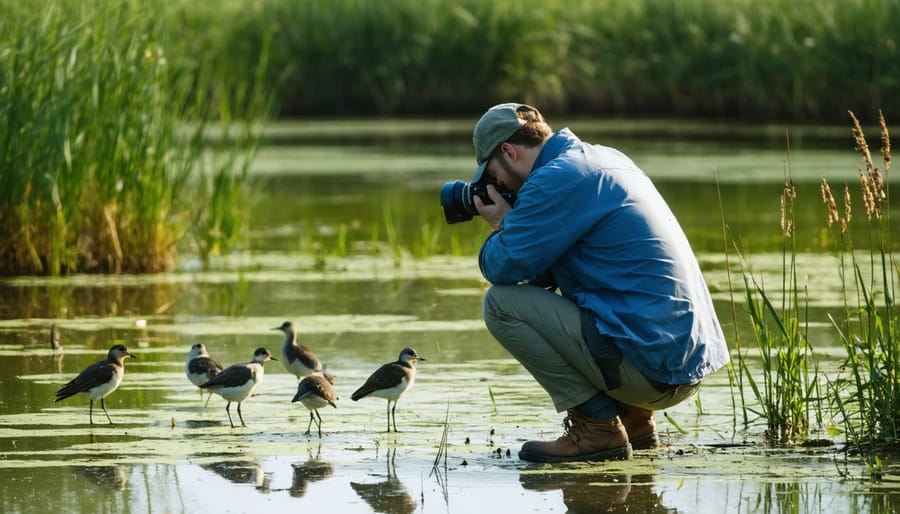
Ethical Considerations
Environmental photojournalists often face ethical dilemmas in their pursuit of powerful images. They must balance their responsibility to document the truth with sensitivity towards their subjects and respect for privacy. In some cases, photographers may need to decide whether to intervene in a situation or remain an impartial observer. They should also consider the potential impact of their images on individuals, communities, and the environment itself.
Consent is another crucial factor, especially when photographing people in vulnerable situations. Building trust and rapport with subjects is essential, as is being transparent about the intended use of the images. Environmental photojournalists should strive to minimize their own environmental impact by following sustainable photography practices and being mindful of their presence in sensitive ecosystems. Ultimately, the goal is to create impactful images that inspire change while upholding the highest ethical standards of the profession.
Famous Environmental Photos
Throughout the history of environmental photojournalism, certain images have stood out for their ability to capture the public’s attention and galvanize action. One such photograph is “Earthrise,” taken by astronaut Bill Anders during the Apollo 8 mission in 1968. This stunning shot of the Earth rising above the moon’s horizon helped spark the environmental movement by showing the fragility and isolation of our planet in the vast expanse of space.
Another iconic image is the 1971 photograph of a factory worker fishing in Cleveland’s heavily polluted Cuyahoga River, captured by the Environmental Protection Agency. This powerful visual representation of industrial pollution’s impact on waterways contributed to the passage of the Clean Water Act in 1972.
In more recent times, Brazilian photographer Sebastião Salgado’s series “Genesis” has showcased the beauty and diversity of pristine landscapes and indigenous communities around the world. His breathtaking black-and-white images serve as a reminder of what we stand to lose if we don’t protect our environment.
Wildlife conservation has also been a focus of environmental photojournalism. Nick Brandt’s haunting portraits of elephants, rhinos, and other animals in East Africa highlight the devastating effects of poaching and habitat loss. His work has raised awareness and funds for conservation efforts in the region.
Climate change, too, has been documented by intrepid photographers. James Balog’s time-lapse images of retreating glaciers, featured in the documentary “Chasing Ice,” provide undeniable visual evidence of the rapid changes occurring in the Earth’s polar regions due to rising temperatures.
These are just a few examples of the countless photographs that have shaped our understanding of environmental issues and inspired action to protect our planet. As the field of environmental photojournalism continues to evolve, it’s certain that more iconic images will emerge to document the challenges we face and the solutions we must embrace.
Environmental photojournalism plays a vital role in raising awareness about critical environmental issues facing our planet. Through powerful imagery, photographers can shed light on pressing matters such as climate change, deforestation, pollution, and endangered species. By capturing the beauty and fragility of our natural world, these visual storytellers evoke emotional responses and inspire action from viewers.
The importance of environmental photojournalism lies not only in its ability to document the current state of our planet but also in its potential to drive change. Compelling images have the power to influence public opinion, shape policies, and galvanize communities into taking meaningful steps towards conservation and sustainability. As we grapple with the challenges of the Anthropocene era, the work of environmental photojournalists serves as a vital reminder of what’s at stake and the urgent need for collective action to protect our shared home.

